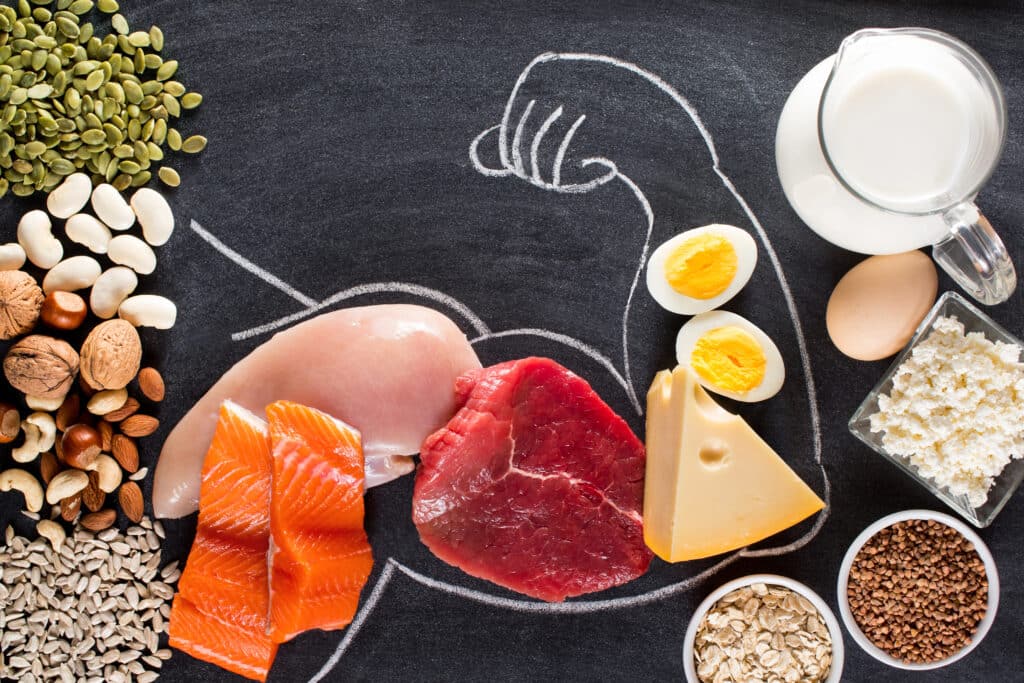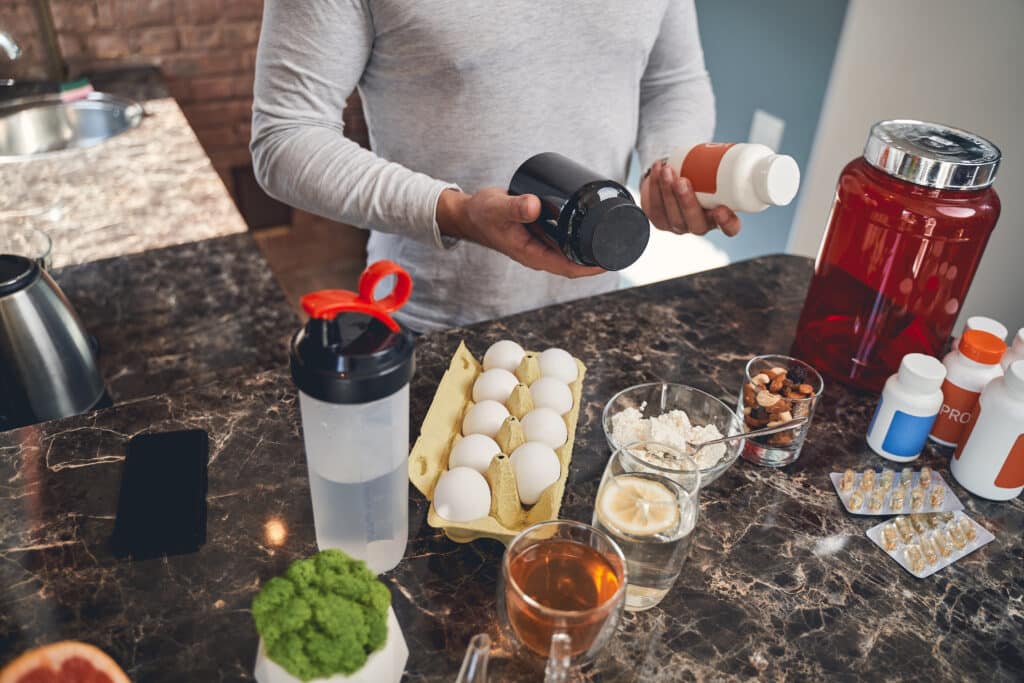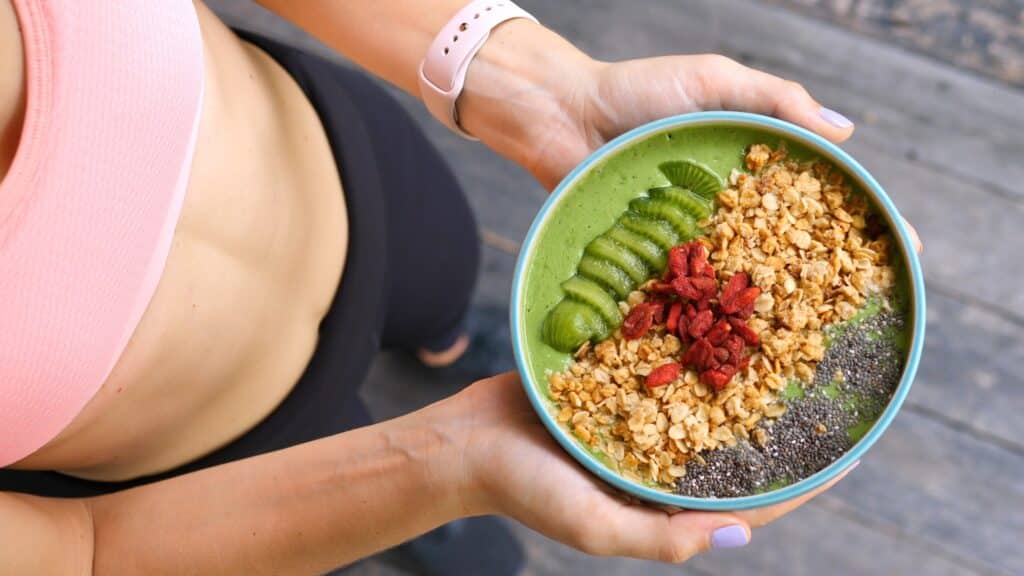Fitness and nutrition go together like squats and leg day. That’s why it only makes sense that many personal trainers offer nutrition services too.
But knowing how to create a workout program and how to create a meal plan for clients are two different skills.
In this article, we’ll outline the benefits of offering personal training nutrition services and the 5 steps to creating killer meal plans for your clients.

Why Should You Create Meal Plans for Personal Training Clients?
Between everything it takes to train clients and grow your PT business, you might wonder if offering meal plans is worth your time.
The short answer is yes, it is. Just ask one of the 42% of personal trainers who are Precision Nutrition certified.
Here’s how trainers can benefit from creating meal plans:
- Help clients reach their fitness goals. Have you ever heard the saying, “abs are made in the kitchen”? When you’re properly fueling your body, you perform and recover better. For your clients, that means faster and more effective results on their fitness journeys.
- Increase client retention. Happy clients are clients who stay with you. And happy personal training clients are the ones who are seeing results.
- Bring in more revenue. The more services you can offer your clients, the more money you can make as a personal trainer — just make sure you’re also charging the right price for those services. Plus, when you have revenue coming in from multiple streams, your business is more well-rounded and financially sound.
5 Steps to Create a Meal Plan for Clients
As you likely know, there are many elements that go into successful meal planning. The key is to devise a plan that includes all these elements and that your client will actually follow.
To help you break into the world of personal training nutrition, follow these 5 steps for creating a meal plan for your clients.
1. Start with an assessment.
What’s the first thing you do when you book a new personal training client? You get to know them. You ask about their fitness goals, history, habits, and so on. Gathering this information is what allows you to create a customized training plan that’ll be effective for them—and the same goes for meal planning.
The best meal plan is one that works for your client and gets them to their goals. Before you can create that, you need to get to know your client. During your initial assessment, you’ll want to discuss topics like food preferences, allergies, habits, history, and nutrition goals.
Here are some example questions to ask:
- Are you allergic to any foods?
- Do you have any dietary restrictions?
- What foods do you like and dislike?
- Do you typically cook or get takeout more often?
- How much time could you devote to meal prepping each week?
- What are your health, nutrition, and fitness goals?
- What is your food/grocery budget?
- Have you tried any diets before? Were they successful?
It’s also helpful to inquire about any anxieties or fears they may have around food or even the gym environment, as these factors can significantly impact their relationship with food and their ability to adhere to a meal plan.
2. Choose a meal planning strategy.
Once you’ve assessed your client, use what you’ve learned to choose the most effective meal-planning strategy for them.
For example, if one of their goals is to eat fewer artificial foods, your meal planning strategy might be focused around incorporating whole foods.
Or if they’re trying to reach a certain body fat percentage, a meal plan made to reach macro targets — such as incorporating high-protein vegetarian foods —may make the most sense.
Other meal-planning strategy examples could include calorie counting, flexible dieting, plant-based, and so on.
Remember, the meal-planning strategy you choose should be based on your client’s lifestyle and goals.

3. Create a realistic, easy-to-follow plan.
With your planning strategy in hand, you’re now ready to create meal plans for your clients. Something important to keep in mind as you get started is that most clients won’t follow a complicated plan. So, set them up for success by making it as easy as possible.
What does this mean exactly? Spell everything out for them. For example:
This: For breakfast, choose a food from each macro category: protein—2 eggs or 3oz turkey sausage, carbs—whole wheat toast or 1 cup of fruit, and fat—2 tablespoons of peanut butter or whole milk yogurt.
Not This: For breakfast, have 15g of protein, 40g of carbs, and 20g of fat.
This: Have one healthy snack between every meal. Easy healthy snack options could be: 1c vegetables with 2 tablespoons of hummus, 1 cup of trail mix, 2-3 hard-boiled eggs, a whole wheat English muffin with 1 tablespoon of peanut butter, or a small handful of nuts.
Not This: Eat up to 3 healthy snacks a day.
One thing to note is that as a personal trainer, even if you’re a personal trainer with a nutrition certification, you can’t prescribe meals. Only a licensed doctor or a registered dietician can prescribe a meal plan.
That doesn’t mean you can’t or shouldn’t create meal plans for your clients, though. It just means that your plans should come in the form of nutrition recommendations and structured guidance rather than a rigid list of the exact meals a client must eat each day.
Helpful meal planning guidance you can provide includes sample meals, snack options, portion guidance, recipes, takeout options, or a shopping list.
4. Decide on a way to hold the client accountable.
Accountability is a concept that personal trainers are very familiar with.
In the same way that holding clients accountable for completing their workouts makes them more likely to achieve their fitness goals, holding them accountable for their eating habits makes them more likely to achieve their nutrition goals.
In fact, studies have shown that sharing your nutrition and fitness data with others leads to more effective weight loss.
There are several options when it comes to holding clients accountable to their meal plans, such as:
- Calorie tracking
- Macro tracking
- Keeping a food diary
- Sending you pictures of meals
Discuss with your client which method they’d prefer to use. And make sure you have a way of monitoring their progress as they track it.

5. Continue to check in and tweak the meal plan as needed.
Changing your eating habits is hard. As their personal coach, you need to constantly remind your clients of that fact and support them as they work toward their goals.
Schedule your nutrition clients for routine check-ins just like you would your personal training clients. During these check-ins, ask them about how they’re feeling, what they like/dislike about the plan, and if they’re have problems following it. Remind them that challenges are normal and it’s okay not to follow the plan perfectly.
As you touch base with each client during their nutrition journey, don’t forget to make adjustments to their meal plan as needed. They may lose weight and need to adjust their target macros, for instance. Or they may not have as much time as they thought to devote toward meal prepping and need to tweak their shopping list.
Again, the only way a meal plan is going to be successful is if the client can follow it consistently.
How to Create & Share Meal Plans in the My PT Hub App
Although creating meal plans can be time-consuming, there are personal trainer nutrition tools available to help. One of the easiest and most effective tools out there (if we do say so ourselves) is the My PT Hub app!
Our personal training software comes equipped with nutrition and custom meal-planning tools that make it simple for you to incorporate nutrition services into your PT business. These tools are easy to use—for you and your clients—and allow you to create individualized meal plans quickly.
Clients can easily track their foods with a nutrition database, access shopping lists based on the plan you create for them, and scan food and drink items to log them.
Sign up for a free 30-day trial of My PT Hub to start creating client meal plans (and much more) today!